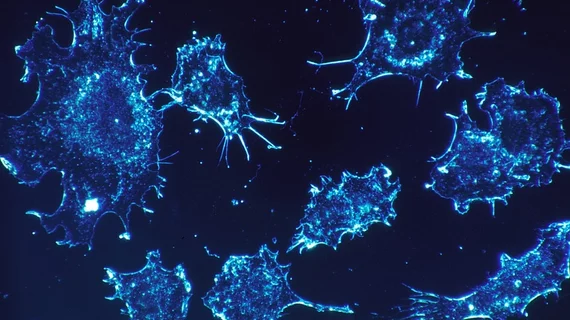Digital PET/CT roots out smaller cancers with quicker imaging times
A new digital PET/CT scanner can identify smaller cancerous lesions with less required exam time compared to a more traditional molecular imaging modality, according to a March 20 study.
A team of radiologists from the University of Pennsylvania in Philadelphia came to that conclusion after comparing the sensitivity and spatial and timing resolution of two different generations of PET/CT machines. The newer scanner detected lesions as small as 5 millimeters and yielded a “much higher” measured contrast that was closer to actual uptake figures.
The study, supported by a grant from the National Institutes of Health and Siemens research agreement—which provided the scanners—with Penn was published Friday in the Journal of Nuclear Medicine.
Suleman Surti, PhD, said the analysis was performed on a torso phantom and not real patients, but the findings should embolden oncologists, and lead to more precise disease diagnoses.
Another study published earlier this year in the Journal of Nuclear Medicine also found that digital PET scanners could detect smaller abnormalities and actually produced images preferred by nuclear medicine experts.
For their research, Surti et al. acquired information via the Society of Nuclear Medicine and Molecular Imaging Clinical Trials Network and combined it with phantom data to generate a mock lesion dataset with known contrast measurements. The group utilized a vendor-set image reconstruction algorithm and gauged modality accuracy according to the area under the localized receiver operating characteristic curve (ALROC), which represented the likelihood of correctly pinpointing and localizing a lesion.
After testing both the Biograph mCT and newer Biograph Vision scanners, the latter PET/CT machine produced less background “nodule distribution" contrast. Clinicians reported higher measured lesion contrast in the new scanner as a result of better spatial resolution. The goal of a molecular imaging expert reviewing a PET scan, Surti and colleagues noted, is to determine if an image contains abnormal uptake, which indicates a patient may have a disease.
“The combination of improved spatial resolution, which provides higher measured contrast, and higher intrinsic sensitivity and improved CTR, which result in better noise characteristics (lower max-scan centroid), leads to a significant increase in ALROC for the Vision relative to the mCT,” the authors wrote.
The use of a phantom was one of the main limitations of this research, the authors noted. Despite this, and a few other constraints, Surti and colleagues believe digital PET/CT scanners can ultimately lead to better care.
“The overall improved performance of the Biograph Vision will lead to improved diagnostic capability in patients for detecting small lesions with much shorter imaging times, they concluded.

